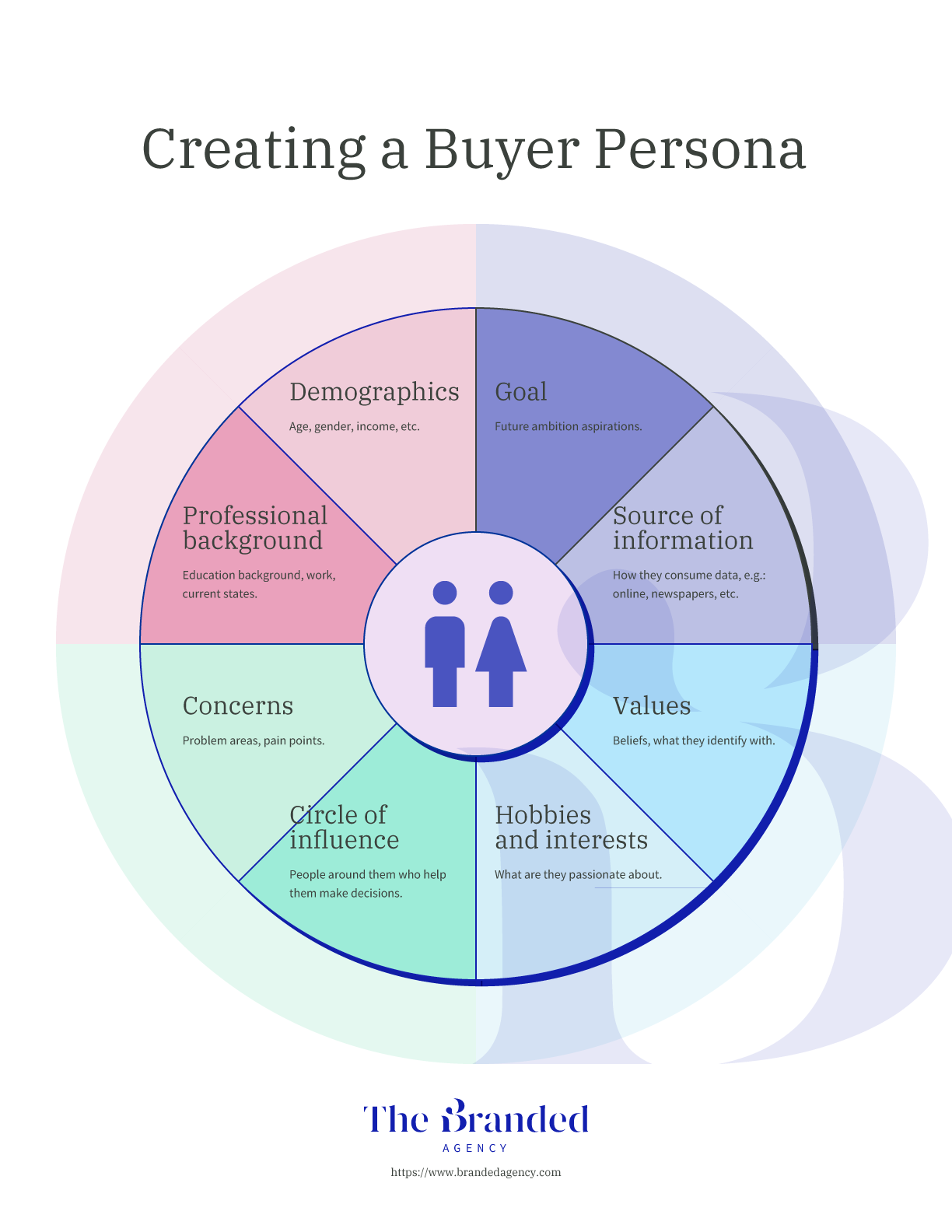What is a Brand Platform? (Examples and Free Branding Platform Framework)
Understanding Brand Platforms and Their Purpose
A brand platform is a fundamental structure that establishes the core identity of a company.
It provides a set of guidelines and principles that underpin all messaging, communication, and marketing efforts aimed at driving growth and success for the organization.
At its core, a brand platform clarifies the unique value proposition of a business, sets it apart from competitors, and shapes customer perceptions.
By defining the essence of the company's identity, it creates a memorable and cohesive image that resonates with customers and stakeholders alike.
In essence, a brand platform serves as the strategic foundation for all branding and marketing activities, and plays a critical role in shaping the overall direction and success of an organization.
Want to learn more about brand platforms, Brand Strategy and Brand Identity?
Keep reading!
If you need help with your companies brand strategy and identity, contact us for a free custom quote.
Content Navigation
Branding Platform by Definition
A brand platform can be defined as an overarching set of values, principles and ideas that shape the identity of a company. It typically includes things like mission statement, key messaging points, core values and personality traits. When done right, a well-defined brand platform helps to establish an organization’s credibility in the marketplace, better communicate its message to customers and prospects, and ultimately drive business success.
Branding Platform Components
At the heart of a brand platform are components such as mission statement, core values, target audience and key messaging points. This information should be used to create everything from marketing campaigns to product descriptions. The idea is to ensure that all communications reflect the company’s identity and clearly convey its unique value proposition.
Stand out from the crowd.
Work with The Branded Agency to create an engaging brand identity, from strategy to design. Get recognized with powerful visuals and effective messaging to attract customers and inform every aspect of your brand.
Brand Strategy by Definition
Brand strategy is the process of creating a brand platform. It involves researching customer needs, identifying core values, and crafting a mission statement that communicates who you are and why customers should care. A strong brand strategy drives all aspects of marketing, communications and product development.
Brand Strategy Components
A successful brand strategy should include components such as a clear mission statement, core values, target audience and key messaging points. It’s also important to create an actionable plan that ties everything together to ensure consistent messaging across all channels.
Brand Positioning by Definition
Brand positioning is the process of positioning a company and its products/services in the minds of customers. It involves establishing a unique identity in the marketplace and crafting messaging that resonates with target audiences.
Brand Positioning Components
The components of brand positioning include things like product benefits, competitive advantages, personality traits, customer value proposition and messaging. This information should be used to create a memorable and meaningful brand experience for customers.
Free Branding Platform Framework
To help organizations get started on their branding journey, we’ve created a free Branding Platform Framework.
This framework is designed to help companies identify their core values and target audience, craft a mission statement, and create key messaging points that reflect their unique identity.
By using the components of a brand platform to craft an actionable strategy, organizations can create a strong and memorable brand identity that resonates with their target audiences.
A well-defined brand platform helps to establish credibility in the marketplace, better communicate messages, and ultimately drive business success.
Examples of Brand Platforms and Their Purpose
There are numerous examples of successful brand platforms that have been used across different industries.
For example, Nike’s “Just Do It” slogan has become one of the most recognizable catchphrases in the world, capturing the essence of their brand platform - that anyone can achieve greatness through hard work and determination.
Apple’s “Think Different” campaign focused on the idea of challenging the status quo and inspiring creativity, emphasizing the company’s commitment to innovation.
Both of these campaigns reflect how a well-defined brand platform can help build an effective identity in the marketplace.
A Brand Platform Document Includes:
When creating a brand platform, the goal is to develop a unified strategy that ties together all aspects of the organization’s identity.
A Brand Platform Document typically encompasses several key elements, each with a specific purpose:
Mission Statement: A concise declaration of the brand's core purpose and focus.
Core Brand Values: Fundamental beliefs and guiding principles that shape the brand's culture and identity.
Target Audience: A detailed description of the brand's ideal customer group, including demographics and psychographics.
Brand Positioning: How the brand differentiates itself in the market and in the minds of consumers.
Actionable Plan: A strategic roadmap outlining steps to achieve the brand's goals.
Brand Voice/Tone: The distinct personality and style in which the brand communicates.
Brand Pillars: Key strengths or aspects that define the essence of the brand.
Brand Vision: A forward-looking statement about what the brand aspires to become or achieve.
Brand Promise: A commitment or assurance the brand makes to its customers.
Brand Personality: The set of human characteristics associated with the brand.
Branding Objectives: Specific, measurable goals the brand aims to accomplish.
Brand Principles: The ethical and operational guidelines that govern the brand's actions.
Brand Messaging: The core ideas and language used to communicate with the target audience.
Visual Language: The unique aesthetic elements like color, design, and imagery that represent the brand visually.
If you are an existing brand, you will also include your brand history, brand value, brand's messages and other elements.
By establishing a unified brand platform, organizations can create an effective and memorable identity that resonates with their target audiences.
This helps to build credibility in the marketplace and ultimately drive business success.
The Benefits of Developing a Strong Brand Platform
Having a strong brand platform is essential for any organization that wants to ensure success in the marketplace. It helps to build credibility, establish an identity, and communicate key messages.
A well-defined brand platform also enables organizations to create a consistent message across all channels and helps them be more competitive in the market. Additionally, having a strong brand platform can help to differentiate a company from its competitors and drive customer loyalty.
Creating a Strong Positioning Statement
In order to effectively communicate your brand’s message, it is important to create a strong positioning statement. This should be concise and include the most essential elements of the organization’s identity.
Some key considerations when writing a positioning statement include:
-Identifying what sets the company apart from its competitors
-Including the target audience
-Focusing on core values and benefits
-Creating a clear, concise message
Detailed Guidelines for your Product or Service
In addition to a positioning statement, it is important to provide detailed guidelines for your product or service.
This should include information about how the product works, its features, and any special instructions for use.
These guidelines should be written in easy-to-understand language and highlight the key benefits of the product or service.
The goal is to make it easy for customers to understand how the product or service can help them and why they should buy.
By creating a strong brand platform, organizations can better establish an identity in the marketplace and drive success.
Developing a unified strategy that ties together all aspects of your organization’s identity will ensure that you have a memorable and recognizable brand that speaks to your target audiences.
Creating a strong positioning statement and detailed guidelines for your product or service will help you stand out from the competition and drive customer loyalty.
With a well-defined brand platform, organizations can create an effective identity in the marketplace and ultimately drive business success.
Vision Statement
The final component in the Brand Platform Document is a Vision Statement. This statement should encapsulate your organization's purpose and direction, while also painting an aspirational picture of the future.
It should be clear, inspirational, and concise. It should reflect how you want to be perceived as a brand and what you are striving to achieve.
A memorable vision statement will help to guide your organization in the right direction, ensure that everyone is working towards a common goal, and motivate employees.
By creating a strong brand platform with an aspirational vision statement, organizations can create an effective and memorable identity that resonates with their target audiences.
This helps to build credibility in the marketplace and ultimately drive business success.
Marketing Document to highlight External Communications
The last component of the Brand Platform Document is a Marketing Document, which should focus on how to communicate externally.
It should include detailed plans for how you will use various communication channels to reach your target audiences and what content should be used. This could include website, social media, email campaigns, etc.
This document should also include guidelines for how to consistently communicate your brand’s message across all channels.
By creating a comprehensive marketing document, organizations can ensure that their external communications are consistent and effective.
This helps to build credibility in the marketplace and ultimately drive business success.
By using these components to create an actionable plan for their brand platform, organizations can develop a strong identity that resonates with their target audiences.
This will help them differentiate from the competition, build credibility, and ultimately drive success.
A Good Brand Platform Document will use effective Brand Platforms that include all the key elements, Brand Identity, Brand Voice, Brand Personality, Brand Promise, Marketing Strategies, Visual Identity, Clear Position, Clear Message, Elevator Pitch a few words about your business and will offer value to the consumers.
It's important to have a clear understanding of how to develop a foundational document with critical Information for your companies longterm success.
Marketing to Appeal to your Target Audience
Your company’s marketing efforts should reflect the values of your brand platform.
It’s important to create a consistent message that resonates with your target audience, so it’s essential to use the appropriate language and visuals in every communication campaign.
It’s also critical to take into account the different needs and wants of each customer segment, as well as the ever-changing trends in the market.
By taking a customer-centric approach to marketing and creating content that is relevant to your target audience, you can build trust in your brand and drive conversions.
Conclusion
Creating a strong brand platform document is essential for any company looking to stand out in their chosen market and achieve success.
By creating a comprehensive document that outlines your brand’s vision, values, message, and marketing strategies, you can create an effective identity in the marketplace and ultimately drive business success.
Developing a comprehensive Brand Platform Document with all components included is key for any company looking to be successful in the long run.
Taking the time to plan and develop a strong document that encompasses all elements of the company branding will help ensure success in the future.
Does your company need help with creating a strong brand?
The Branded Agency can help you create a comprehensive Brand Platform Document that will set your company up for success.
Contact us today to learn more!




